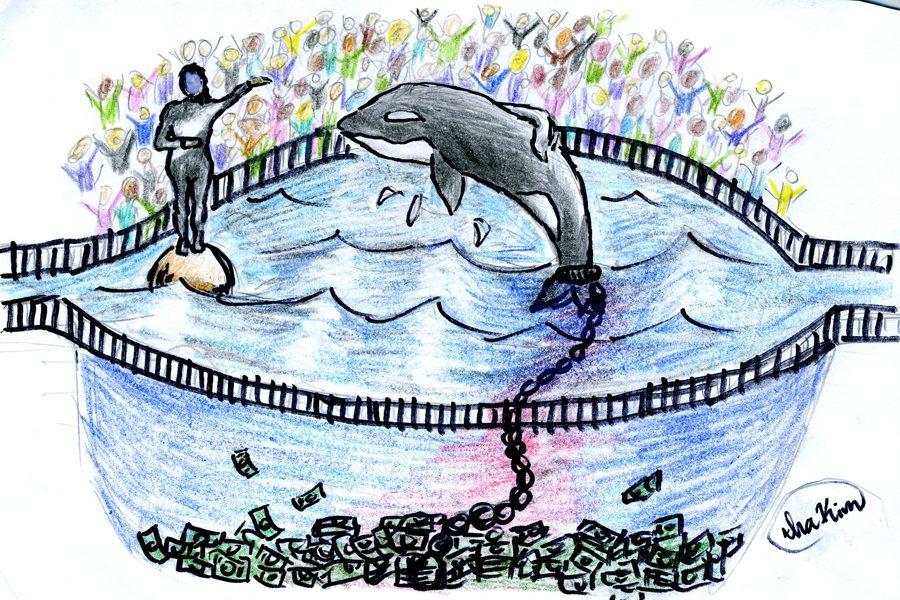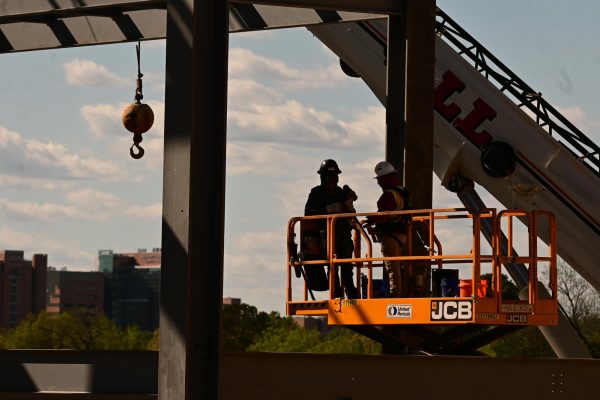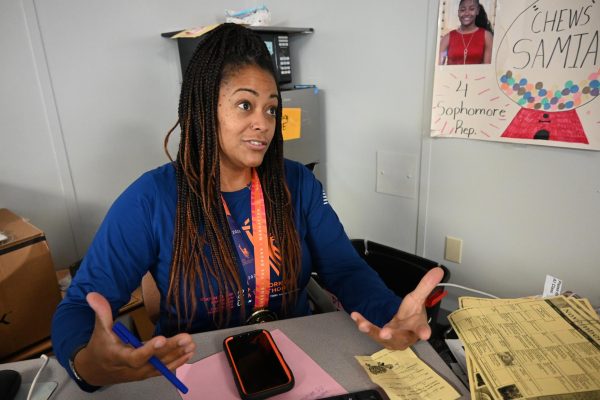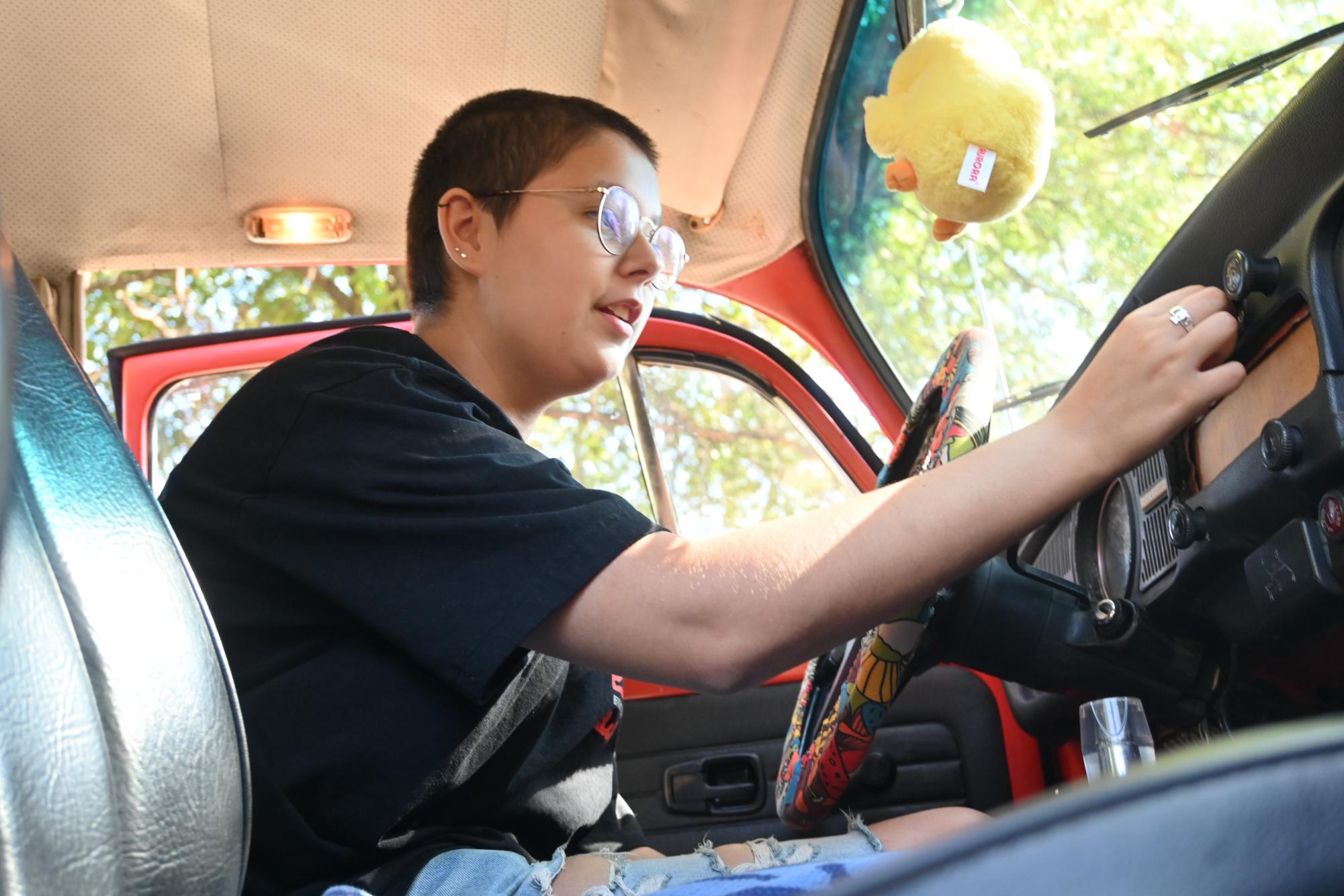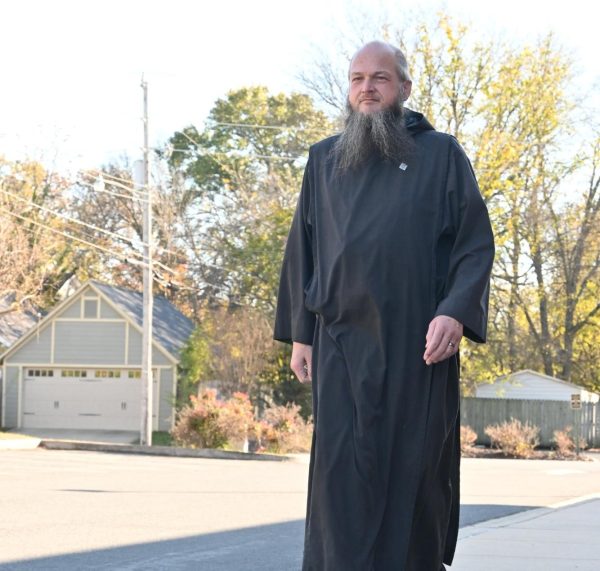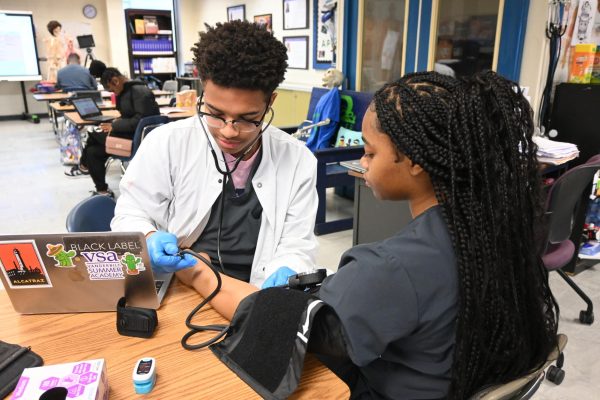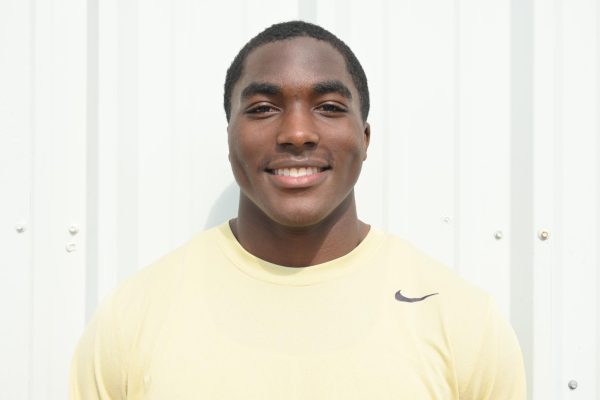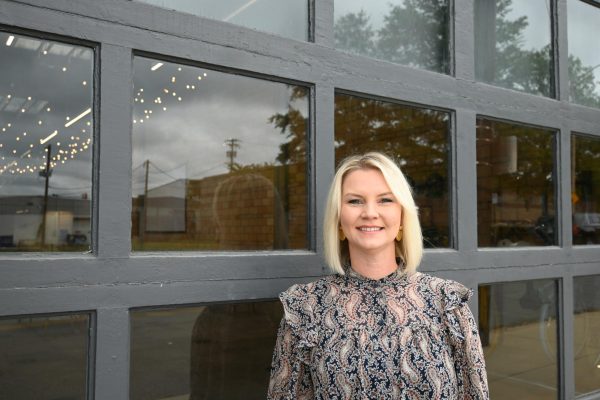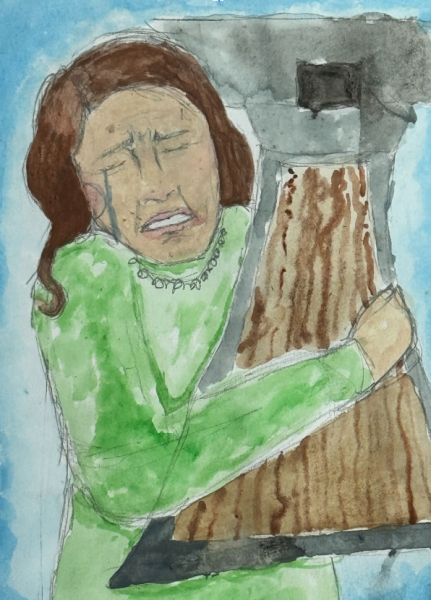Prisoners Of Sea World: Is Death Their Only Escape?
Seaworld claims they “rescue” animals but they do quite the opposite. They steal animals from their natural habitat, from their family and loved ones, confine them causing psychological damage, and deprive them of food in order to make money.
February 28, 2017
He was taken away from his family at the age of two and trapped in a small cement tank. He and the others were starved, which would make them attack him to take out their frustration. SeaWorld made him have 21 kids; 11 died and the rest were separated from him. His teeth were worn down from chewing the metal bars of his prison in an effort to escape. He spent over 33 years of his life abused, starved, and confined until Jan. 6, 2017, when death finally set him free. His name was Tilikum, a Chinook word for family, friends, and tribe- everything they stole from him.
His journey in confinement started in a little tank in Zoo Reykjavík, Iceland. He was then sold to Sea Land where he was kept in a tank with two other orcas. To prepare them for the show, Sea Land would keep the orcas in tanks in which they couldn’t move and starve them so that they would do tricks better, like jump higher for food. The starvation and confinement would aggravate the other orcas and they would attack Tili, leaving him covered in bloody scratches, and the exhaustion from all the shows he had to perform gave him stomach ulcers. Even after witnessing this abusive behavior, the staff of Sea Land didn’t consider that confinement was psychologically damaging to the orcas.
Keltie Byrne, a trainer, fell into a tank and was killed by the three orcas. Then Tilikum wasn’t returned to the ocean, but rather sold to SeaWorld. Even though SeaWorld knew that Tilikum had killed a human being, the company bought him because they got a price they couldn’t refuse. At SeaWorld, Tilikum, along with other orcas, dealt with similar brutal conditions which lead to two more human deaths. Daniel Dukes went into the orca tank one night after the park was closed and was found dead on Tili’s back the morning after, and Dawn Brancheau, a trainer, was killed by Tili during a show.
So why, after all the violent attacks on humans and on other animals, does SeaWorld think that keeping these animals confined is okay? Male orcas in the wild live 60 to 70 years and females live 80 to over 100 years. But the average orca at SeaWorld dies at 13 years old. Orcas in the wild are friendly, social creatures and there has never been a report of violence exhibited by them towards humans or other orcas, yet at Seaworld the orcas harm humans and other orcas. Orcas swim up to 100 miles a day in the wild; they would need to swim around the main pool 1,900 times a day to swim that distance. In the wild they are just orcas, but at SeaWorld they truly have been turned into killer whales.
After the three human deaths, the government decided that humans and orcas should not swim together because it violates federal workplace safety laws. Currently, SeaWorld is appealing the decision even though the park’s records have more than 100 incidents in which the orcas behaved aggressively with the trainers. SeaWorld wants to make money from shows even at the expense of orca and even human lives.
SeaWorld claims it “rescues” animals but it does quite the opposite. It steals animals from their natural habitat, from their family and loved ones, cause psychological damage by confining them, and deprive them of food in order to make money. Marine animals like sharks and dolphins are subject to the same abuse the orcas are. Imagine having to live in a bathtub for the rest of your life. That’s what it’s like for those innocent creatures.
SeaWorld claims it “helps” kids learn about marine animals, but taking the animals away from their natural habitat is no way to accurately portray them. SeaWorld would be much more successful if it showed 3D shows of orcas and dolphins living the ocean with their families.
SeaWorld claims it “cares,” but if they really does, it should send its imprisoned animals to ocean sanctuaries where they can live out the rest of their lives in peace.


